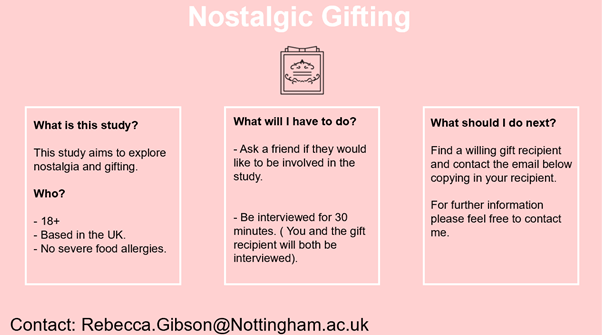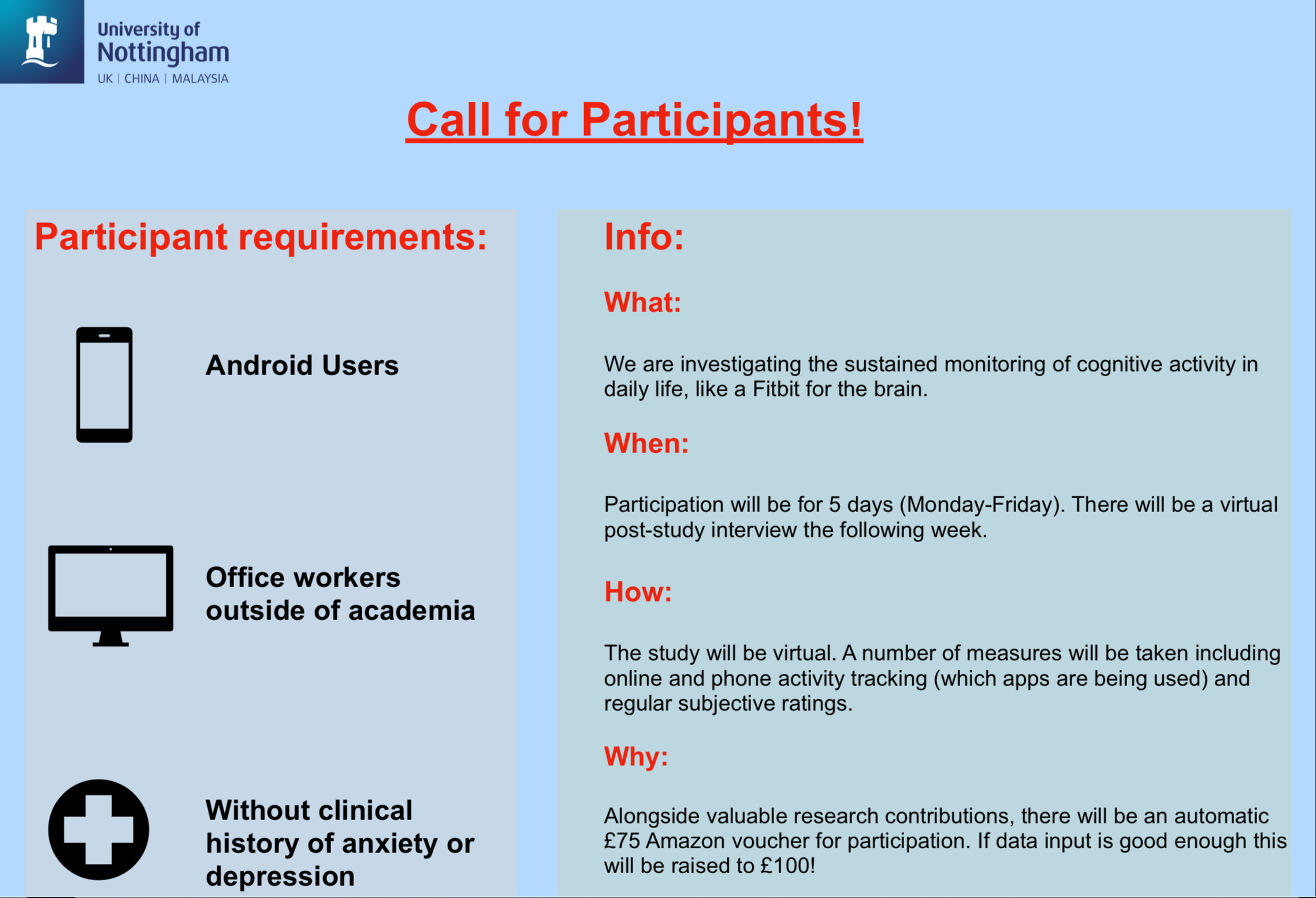post by Harriet Cameron (2018 cohort)
Hi everyone! I hope you are all doing well, staying safe, and findings ways to care for yourself and your support networks during the apocalypse. I am going to talk a little bit about my internship that I completed in June 2020. I offer three (+1) lessons that I have learned throughout, in the hopes that they will be useful for readers still deciding when, where, and how to do their internships.
My internship was undertaken with my industry partner – the Nottingham Contemporary [4] – part-time over nine months. Starting in September 2019, I joined the small team working on the CAMPUS study programme [5]. I worked one day a week three times a month, and four days a week once a month. CAMPUS was designed as a city-wide programme aiming to bring together folks with a wealth of different backgrounds and perspectives to discuss critical pedagogies each month in venues and contexts across Nottingham. We organised speakers from all over the world to come to Nottingham and each deliver a three-day workshop to a group of 19 participants (who attended all seven workshops offered). We had seven amazing speakers planned, including Quinsy Gario [3], Gurminder K Bhambra [1], and Céline Condorelli [2].
CAMPUS offered a wide variety of experiences, stemming from both the opportunities it presented and the barriers and problems that arose throughout the nine months. Each month I was able to interact with the CAMPUS cohort, who ranged from curators, to lawyers, to artists, to unionists etc.; in order to swap and discuss our perspectives and life experiences. Each month I also met one of the seven faculty members co-facilitating the workshops and heard from their expertise. In fact, I would argue that the greatest part of this internship for me was precisely this opportunity to interrogate different critical pedagogies; some that I had explored before, some that I hadn’t, and none that I had explored in as much depth with as much passion as demonstrated by the speakers. One in particular that really sticks out to me was Gurminder K Bhambra’s talk about de-colonialising the university. After listening to her public talk and spending three days delving deeper into the concepts she brought up, I ended up completely re-evaluating everything I knew about and had experienced during my own journey through education. Quinsy Gario’s week was much the same, taking us through his experiences in art and activism and inspiring me to ask uncomfortable questions of my own life and cultures.
As well as offering opportunities, these amazing interactions came with their own challenges as well. It is easy to stop critically questioning and reflecting when you find your corner of academia to hunker down in – when you find the place that reflects the beliefs and values you brought in with you and are often, at least in my case, representative of the opinions of much of your wider support group outside the Ivory Tower. This isn’t some great fault of the human experience, I would personally attribute it to a kind of neural exhaustion – life and work (read: capitalism) takes up so much of our capacity that it’s hard to find space to ask hard questions and time to introspect and reflect comprehensively on the things you learn and see. So suddenly finding yourself surrounded by brilliant minds, with both the time and space to delve deep into topics that were at times, admittedly, uncomfortable to discuss, was hard but incredibly valuable.
The first lesson I learned and offer out to you, then, is this:
Be uncomfortable. How many times in your life are you offered three months to try something completely new? Take the opportunity to do something you haven’t done before, to try out new skills and ask new questions and meet new people. There is value in leaving your comfort zone.
Nine months is a long time to be included with an organisation or involved in a project. Over that time, I came across a number of barriers, setbacks, and obstacles that required working around. The very first month we were due to meet the cohort for the first time, the speaker sadly fell ill and had to cancel last minute. The head of our CAMPUS team unexpectedly left the organisation quite early into the programme, causing no small amount of confusion. Then, of course, the world ended and we could no longer meet up each month with far less notice to adjust than you would expect a pandemic to offer. Amidst these things were peppered other, smaller crises, inevitable in any project as ambitious as CAMPUS. Finding places for speakers to stay, keeping the cohort comfortable and cared for, broken heating systems, difficult communication, managing budgets, traversing tensions, and so on and so on and so on.
Navigating through these obstacles was difficult. As someone relatively unused to the organisation, it was hard to know how best to tackle some of these issues as they arose, especially when some months they came so thick and fast there was no time to even address the first issue before numbers two, three, and four were rearing their heads and demanding instant attention. The hours were long, with workshop weeks regularly lasting up to 60 hours (once you factor in my regular PhD work, which we must, as I was doing the internship part time). Nevertheless, these experiences were invaluable to me, and retrospect goes a long way in learning about your own capabilities and strengths. I’ve honed and practised skills, some of which I haven’t drawn on in a number of years, and some of which came to me as new at the beginning of the PhD. Time keeping, multi-tasking, budget codes, accountability, event planning, and most importantly of all for this scenario; flexibility. I had to learn how to let go of things that became less important than other tasks – something my brain, with its tendency towards hyper-focus, actively loathes. I had to learn to re-prioritise on the fly and find creative ways to achieve tasks that fell through when attempted in the standard manner. I had to be willing to drop entire activities that had been organised weeks in advance because they were no longer feasible and advocate for alternative arrangements – even when those alternatives didn’t feel quite as good or as in control. Speaking of which, I had to learn to cede control at points and listen to the desires of other parties – something I have had plenty of practise with but still find incredibly difficult when organising big events. All of these things have made me, I believe, a better researcher and better prepared to tackle the unpredictable and oftentimes chaotic world of academia.
So here is the second lesson I offer:
Be flexible. If you are wired anything like me, or maybe even if you aren’t, flexibility can be something at best inconvenient and at worst slightly traumatic. My anxious brain hates when things don’t go to plan but this is a wildly valuable skill, something that can be utilised in all walks of life (even beyond your professional world) and actually, sometimes it can lead to even better experiences. Ironically, despite my natural aversion to change, I’m a huge fan of spontaneity. Once I recognise that something isn’t working, I love the feeling of diving in the deep end and really, genuinely mixing it up. And I cannot advocate enough how many wonderful things can happen when you’re willing to take a leap of faith and do something different.
This flexibility is something that comes by necessity when working in an inter-disciplinary setting. For me, I came from the world of human geography, into computer science, and dived head first into working an internship at an art gallery. As some of you will be all too painfully aware of, when you try to explain your interdisciplinary PhD to someone new, one of the first things they might ask is ‘how does all of that go together?’. At this point you get to make the decision of taking three hours trying to explain how, for example, geography, computer science, and art go together; or you can crack a joke and go home and cry because when you laughingly responded “I’ll let you know when I work it out” you weren’t kidding and some days it feels like you never actually will work it out. Is that relatable?
The point is that for some of you, just like it did for me, starting an internship in a brand new area that you may only have tangentially or informally accessed before can be thoroughly overwhelming. Those questions about how everything goes together can be enhanced fourfold when you start working in this new area and you’re introduced to all the complexities and nuances and politics that you hadn’t even gotten around to considering yet. When I first got to the Nottingham Contemporary I felt completely lost. I’d never worked in an office before, I didn’t know the arts sector, I’d never used the programmes or software they were using, and I didn’t know the acronyms. But I quickly picked up the bits I needed to (with a lot of help from a wonderful lady named Mercé) and I enjoyed the challenge. Submerging myself in one arts organisation quickly allowed me to make connections with other organisations in Nottingham. I met some really interesting people and we had some fantastic conversations about my PhD. Some of those people and organisations have even gone on to help me further with my research, offering venues and advertising and participants.
So my third piece of advice is this:
Be immersed – In some ways, this is where some of the most important value of the internship comes from – from being able to absorb yourself in this new culture and learn about the reality of it, and not just what you can gleam from choice snippets of media or literature. From networking and meeting people, to cementing your new understanding in the actual contexts that the research you’re doing will ultimately impact – there’s no better way to understand the role of your research than to become immersed in that world.
When I completed the first draft of this blog with just the three pieces of advice in it, I spent a full weekend uhming and ahhing over whether or not it was disingenuous of me to leave it on such a note. Because I also have advice to offer from the things that went wrong throughout this process – the things I wish I’d done differently. The tea, if you would, which may cast a less rose-tinted light on this internship and hopefully may work as a warning for you. Detailed below is a combination of my own failings, failings from the organisation, and failings of no-one in particular which nevertheless deeply affected the internship as an experience.
When I first started the internship, I didn’t set up enough boundaries, I didn’t talk enough about my expectations for the internship and my skills that I could offer. I was so excited about the programme and getting involved in the organisation that I didn’t stop to question what precisely my role would be. And what that resulted in was an internship in which I feel like I wasted huge chunks of those nine months printing agendas and booking hotels – valuable skills to be sure, but skills I already possessed and skills which, more importantly, don’t bear any relevance to the PhD. This failure on my part also meant that when the head of the CAMPUS team unexpectedly left, there was no-one left on the team who really knew who I was or what I could offer. Now this one is a little bit ‘six of one, half a dozen of another’, because whilst I didn’t then go to the next person and rectify my mistake, actually there were several months where it was massively unclear who was in charge. The person who moved on left behind her a gap that nobody seemed able to fill, and that left me floating in an existential puddle of uncertainty. This meant I had almost entire days where I would literally be sat twiddling my thumbs because there was no-one around to go to and ask for guidance. I made the best of these days I could, preparing several months ahead where possible and assisting other people in the office, but rarely – outside of the workshop weeks – did I have full days where I was busy. This lack of communication on my part, and lack of coherence on the organisations part, meant that overall, I found the internship to be incredibly frustrating. It also meant that when an opportunity arose to collect some data relevant to the PhD, I was denied because the person who might have backed the data collection was no longer there to support me and I had given up on searching for accountability. Although this final section is a warts and all revelation, I feel I should share this lesson so that you might learn from my experience and avoid some of the same pitfalls.
So this bonus piece of advice is:
Set boundaries – Just because you are working for a new organisation doesn’t mean that you can’t speak out and establish your needs as important. Some of what happened in my internship was unavoidable, but other parts could have been handled better if I had entered with the confidence to assert myself. Three months is a sizeable chunk of your PhD time, and you need to enter into it knowing what you’re going to get out of it.
So that’s it, the three-and-a-bonus pieces of advice I feel qualified to offer after completing my internship. Be uncomfortable, be flexible, be immersed, and set boundaries. I hope you found this interesting to read, and if you have any more questions about my internship or yours, then you can contact me at harriet.cameron@nottingham.ac.uk
Peace and love,
Harriet ‘Alfie’ Cameron
[1] G. K. Bhambra. (2020). Gurminder K Bhambra. Available: https://gkbhambra.net/ (Accessed: 25/06/2020)
[2] C. Conderelli. (2020). Céline Condorelli. Available: https://celinecondorelli.eu/ (Accessed: 25/06/2020)
[3] Q. Gario. (2020). Quinsy Gario. Available: https://en.wikipedia.org/wiki/Quinsy_Gario (Accessed: 25/06/2020)
[4] Nottingham Contemporary. (2019). Homepage. Available: https://www.nottinghamcontemporary.org/ (Accessed: 04/03/2019)
[5] Nottingham Contemporary. (2019). CAMPUS Independent Study Programme. Available: https://nottinghamcontemporary.org/exchange/campus/ (Accessed: 07/05/2020)






